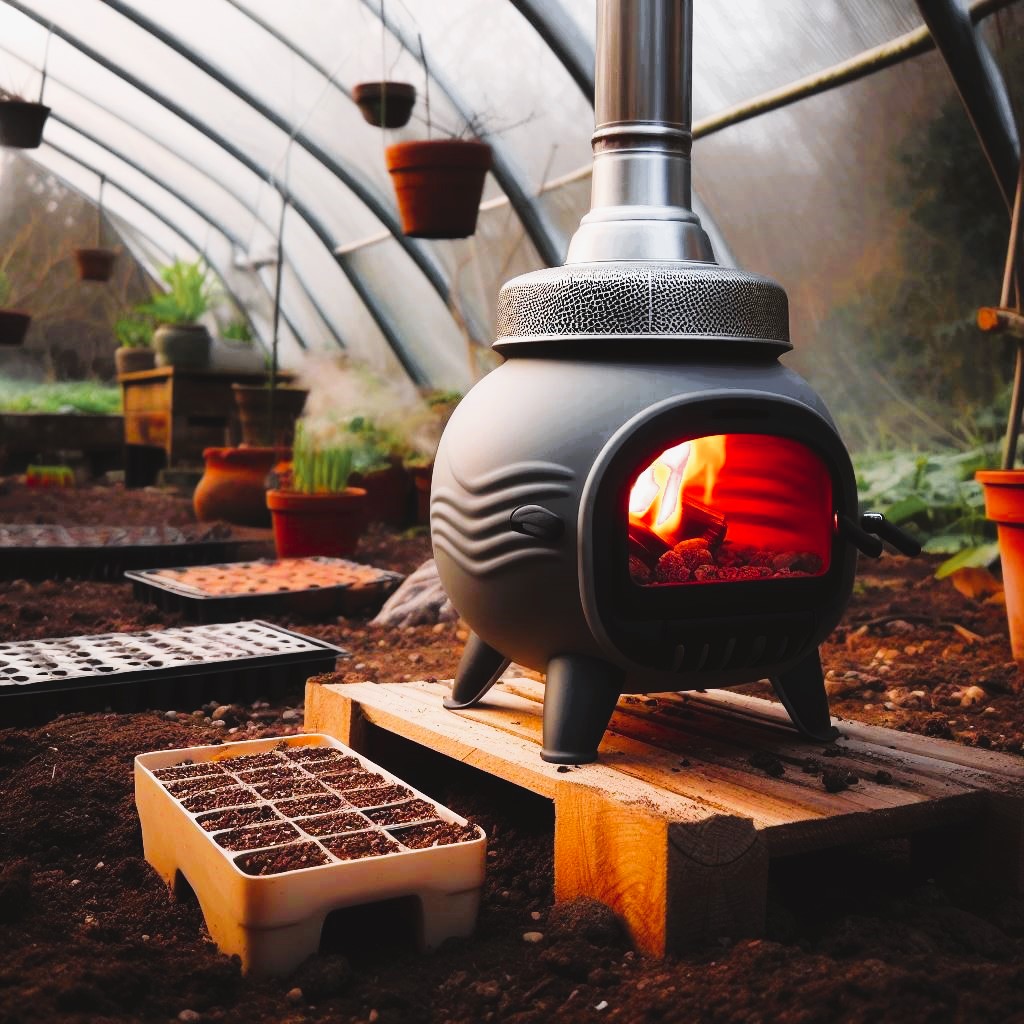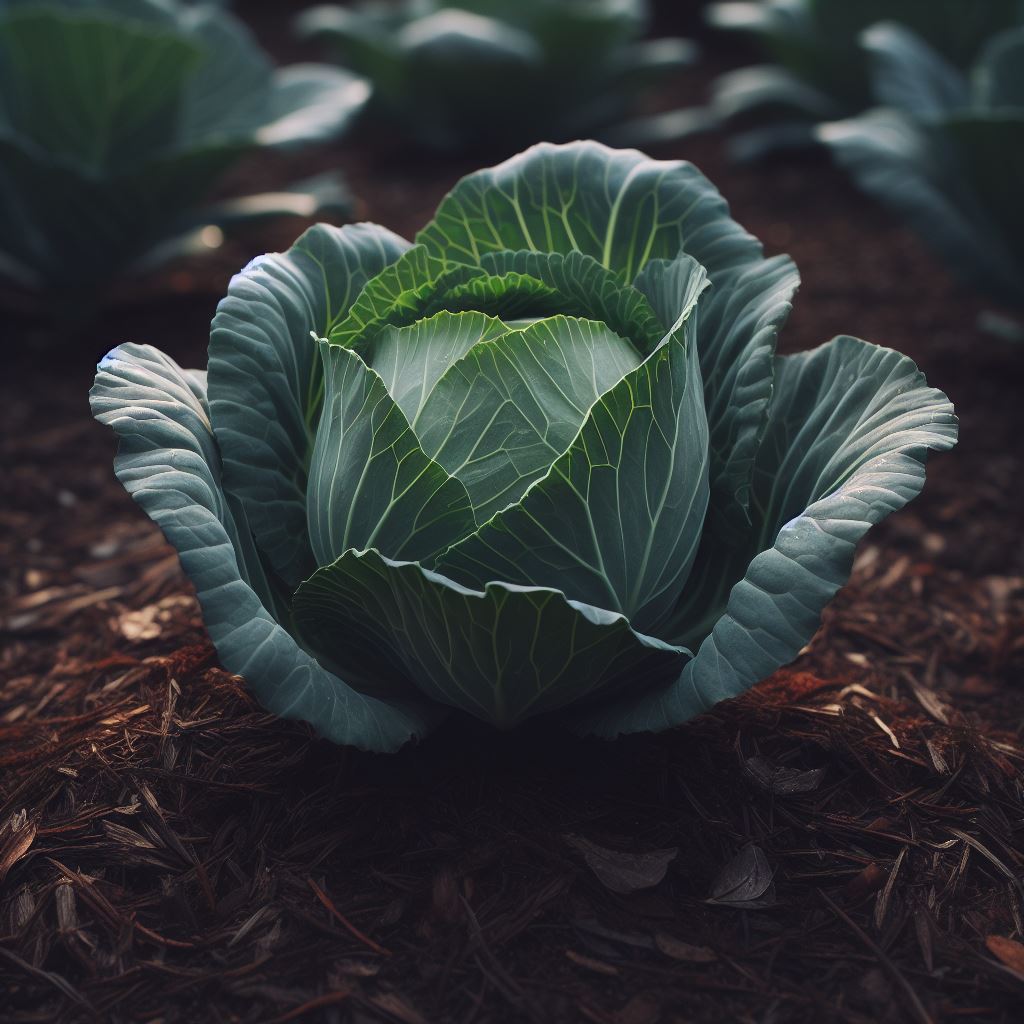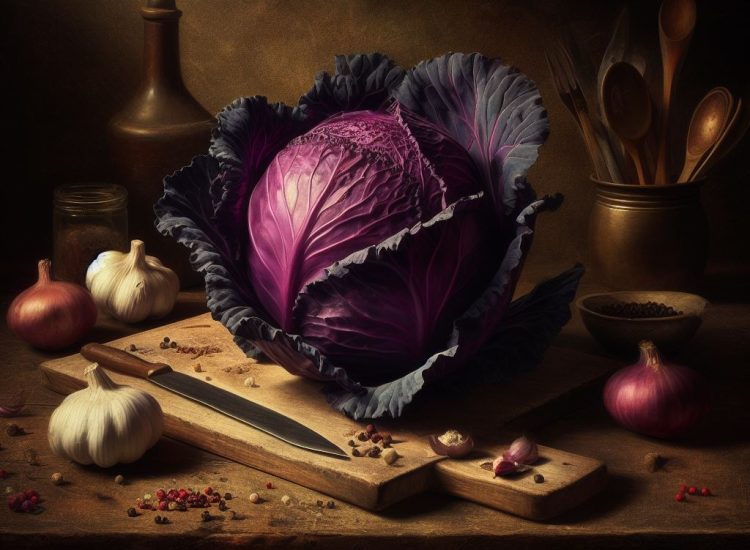Cabbages are part of the Brassica family, with the likes of Broccoli, Kale and Brussels Sprouts.
Both green and red cabbages are excellent sources of vitamin C and vitamin K, with the red cabbage being a particularly good source of vitamin A, it containing 11x more vit A than its green counterpart.
Vitamin C increases absorption of iron, it also assists with wound healing and helps to maintain bones, teeth, and cartilage. Cabbages have been shown to�raise levels of beta-carotene, lutein, and other heart-protective antioxidants. They also lower �oxidized� LDL, which has been linked to hardening of the arteries.
Whether in salads, boiled, steamed or fried, cabbages are versatile in the kitchen, which my favorite food type as vegetables eaten at different stages of cooking provide different nutrients and so benefits.
We grow an heirloom variety of both red and green cabbage: “Red Acre” and “Golden Acre”, respectively.
Cabbages do not grow well in Portugal’s 40+C (104+F) summer heat. On the flip side, though, what we do have is�a very�long growing season, meaning we can achieve two cabbage harvests per year. The early-Jan sowing is ready to harvest May-time, while our the second crop gets sown late-summer and is harvested through December and well-into the new year.
Sowing Cabbages
Cabbage is a cool-weather crop.
Sowing should be done so that plants aren’t trying to mature during the heat of summer, as a spell of hot weather will likely see your plants bolt (send flower stalks up prematurely) and so fail to produce a harvestable head.
We sow our seeds in a polytunnel in early-January.
Temperatures often crash below the freezing mark at this time of year in Portugal, so to achieve a decent germination rate (which requires a soil temperature of 10+C/50+F), I will often heat the polytunnel with a small pot belly wood burner.

Filling seed trays with nutrient-rich homemade compost, I sprinkle three or four seeds into each of the trays’ compartments.
After 7-10 days I will, on average, have achieved a 80-90% germination rate.
Over the coming days I pick out the weaker plants, allowing only the strongest one in each compartment to grow on.
Planting Out And Spacing Cabbages
Once our cabbage plants have reached approximately 10cm (4 inches) tall, we will begin move the trays to sit outside during the day in order to acclimatize the plants to the conditions, readying for planting out.
After a week-or-so of acclimatization, and after the threat of frost has past, the plants are ready to be transplanted out into our nutrient-rich vegetable bed.
We space young cabbages approximately 40cm (16 inches) between plants, in rows about 60cm (24 inches) apart — this seems to work well enough for us, but it isn’t a rule we strictly adhere too. Spacing a further apart will encourage larger heads to develop.
Growing Cabbages
As soon as the plants have become established I will add a mulch in and around the stems. Adding mulch too early in the season can actually slow down the soil’s warming process. Also, we’ve had issues with stem rot in the past, where young stems have had constant exposure to moisture through contact with the mulch.
Organic mulch is a must, though, and serves four key purposes: it helps regulate the soil temperature, it locks in the moisture, it adds nutrients to the soil as it decomposes, and it suppresses weeds.
It is especially important when the cabbages are young to keep the patch free from weeds. Undesirable invasions in your vegetable bed will absorb key nutrients and water, which could result in poor/stunted growth.

Cabbages should receive a consistent and generous watering, particularly when young which, depending on your area and the time of year you’re growing in, will hopefully be provided by nature.
Our spring rains cut-off around May, by which time our first cabbage crop has already matured and often times harvested. And with our second crop not being transplanted until October, this usually times with the return of the fall rains.
Utilize Mother Nature as much as possible, she makes growing difficult enough, fighting her needlessly is madness.
Harvesting Cabbages
Depending on your variety and growing conditions, cabbages can take anywhere from 4 to 6 months to fully mature. However, the leaves can harvested at any stage of growth, as can the heads, they’ll just be smaller.

Cabbages are ready to harvest when the central head is firm to the touch, and compact.
Use a sharp knife and cut the heads at the base of the stem. A clean cut will allow the cabbage plant to continue growing, meaning additional greens and indeed, if conditions permit, additional (though smaller) heads.
Note: If cut correctly, cabbage can grow between 3-6 extra heads (like big Brussels Sprouts).
Storing Cabbages
During the winter, we are able to leave cabbage heads on the plant, harvesting as and when needed. But with our first crop, which can extend into early summer, this isn’t possible — the heads have to be harvested and stored.
A crisper drawer in a fridge, or better yet (thinking of space), a cool, dark space of a cellar is ideal for storing cabbages. Wrap each head with brown paper and place them in the drawer/on a shelf a few inches apart, making sure they don’t touch.
A head of cabbage can last up two months when stored this way.
No need to over complicate the storage process. Just be sure to regularly check on the quality of your cabbages.
A Quick Word On Heirlooms
Heirlooms are old-time varieties that produce offspring with the exact same traits planting after planting, season after season, generation after generation — some heirloom seeds date back hundreds of years, or more.
Saving seeds from a hybrid variety, such as you would buy from most garden centers, would mean that the second generation you grow isn�t guaranteed to produce the same �true to type� plant, and in turn fruit.
If seed saving is your aim –which it should be in my opinion, in order to preserve healthier, naturally pest-resistant and true to type varieties– then having your own heirloom (sometimes called “heritage”) seed vault�is essential.

